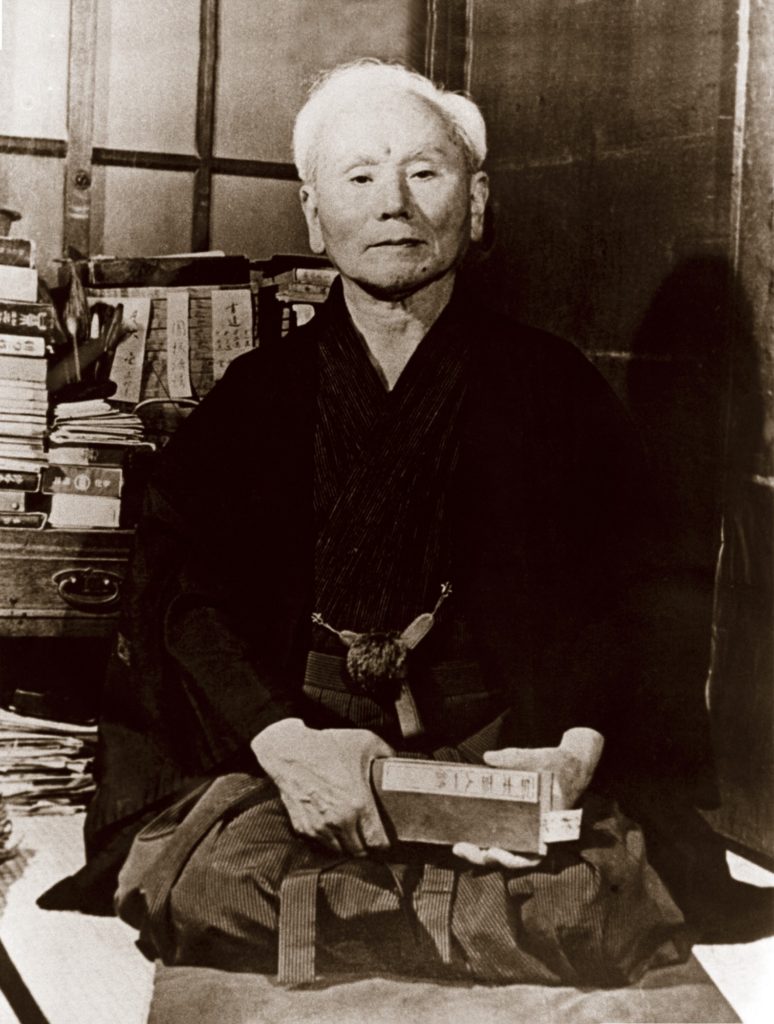 Master Gichin Funakoshi, founder of shotokan karate-Do: “The ultimate aim of the art of karate lies not in victory or defeat, but in the perfection of the character of the participant”, Master Gichin Funakoshi, the father of modern karate, died on April 26, 1957. On his black, cross-shaped gravestone are the words “Karate ni sente nashi“ [There is no first attack in karate].
Master Gichin Funakoshi, founder of shotokan karate-Do: “The ultimate aim of the art of karate lies not in victory or defeat, but in the perfection of the character of the participant”, Master Gichin Funakoshi, the father of modern karate, died on April 26, 1957. On his black, cross-shaped gravestone are the words “Karate ni sente nashi“ [There is no first attack in karate].
KARATE PRACTICE CONSISTS OF THREE MAJOR TYPES OF EXERCISES:
Kihon (basics)
The elementary building blocks of karate: stance, posture, coordinated body movement, and concentration upon the opponent. These provide a sound foundation. If the basics are strong, it is easy to develop more advanced techniques.
Kata (form)
A pre-arranged sequence of techniques and movements simulating combat against multiple imaginary opponents. This specialized method of training is a rational extension of basics, offering situations in which certain attacks and defenses would be applicable. Kata is performed solo or in precision teams, and offers practice in combinations of techniques, focus and release of tension, breath control, and rhythm. Each level of karate study has its prescribed kata that trains the student, mentally and physically, for the next more advanced level.
Kumite (sparring)
As with kata, each level of training has its prescribed method of sparring, from the formal five or three-step sparring of the basic level (when the targets and attacker/defender are pre-arranged), to the free sparring of the most advanced level (when the participants themselves act/react spontaneously with attacks/blocks, using timing, distance, and strategy. But always, the attack is arrested just before body contact is made, requiring extreme body control and mental discipline.
BEGINNERS
There is a beginner’s course offered every quarter of each calendar year beginning of January/April/July/October. This class meets three times a week for one hour. A uniform is not required for first months; they may practice in a loose fitting and body concealing clothes (i.e. T-shirt and sweatpants). Upon completion the first months of the beginner’s course, a uniform is then mandatory.
EXAMINATIONS
Kyu ranking examinations are held every six months. You will be tested on kihon, kata,and kumite appropriate for your level, and covered in class.
Students at the Katy Dojo LLC are promoted through the following belt levels:
- white (10.kyu)
- white/yellow (9.Kyu)
- yellow/white (8½.kyu)
- yellow (8.kyu)
- orange/white (7½.kyu)
- orange (7.kyu)
- green/white (6½.kyu)
- green (6.kyu)
- blue/white (5½.kyu)
- blue (5.kyu)
- purple/white (4½.kyu)
- purple (4.kyu)
- brown/white(3½.kyu)
- brown I (3.kyu)
- brown II (2.kyu)
- brown III (1.kyu)
- black/white(½.Dan)
- black(1.Dan/Shodan)
INSTRUCTORS TEAM: President & CEO: Sensei Siamak Tavakoli, Assistant Instructors: Sensei Maryam Tavakoli